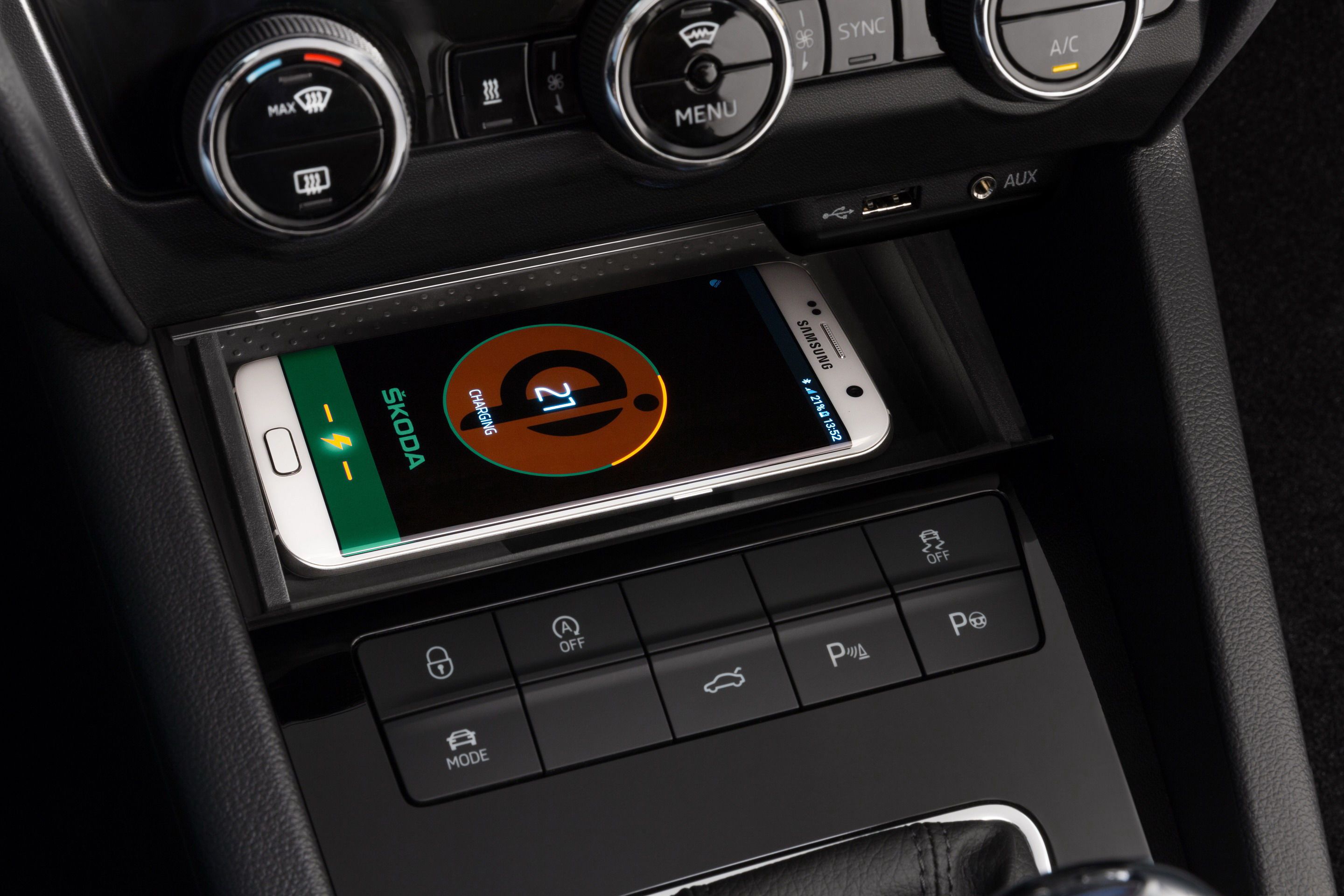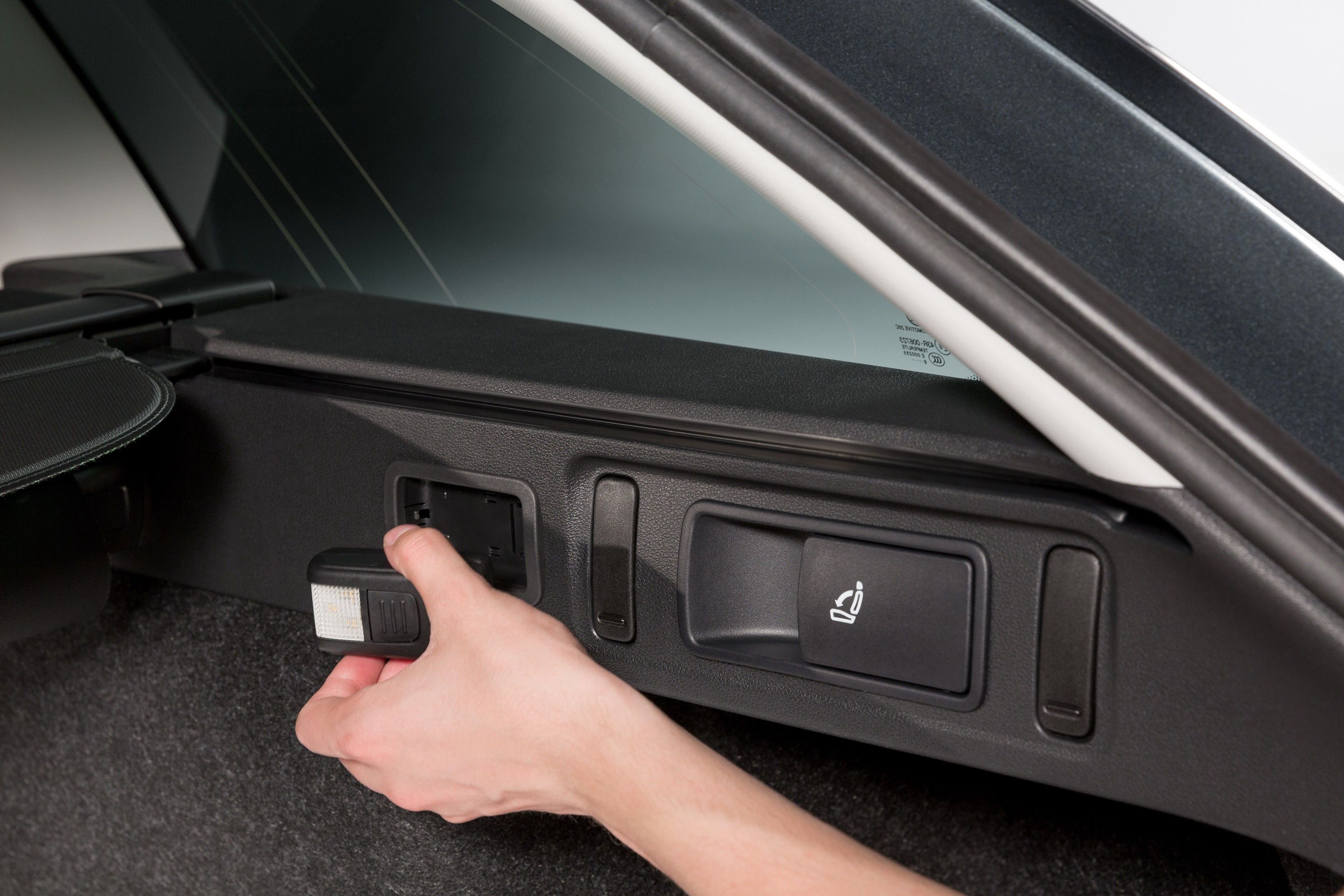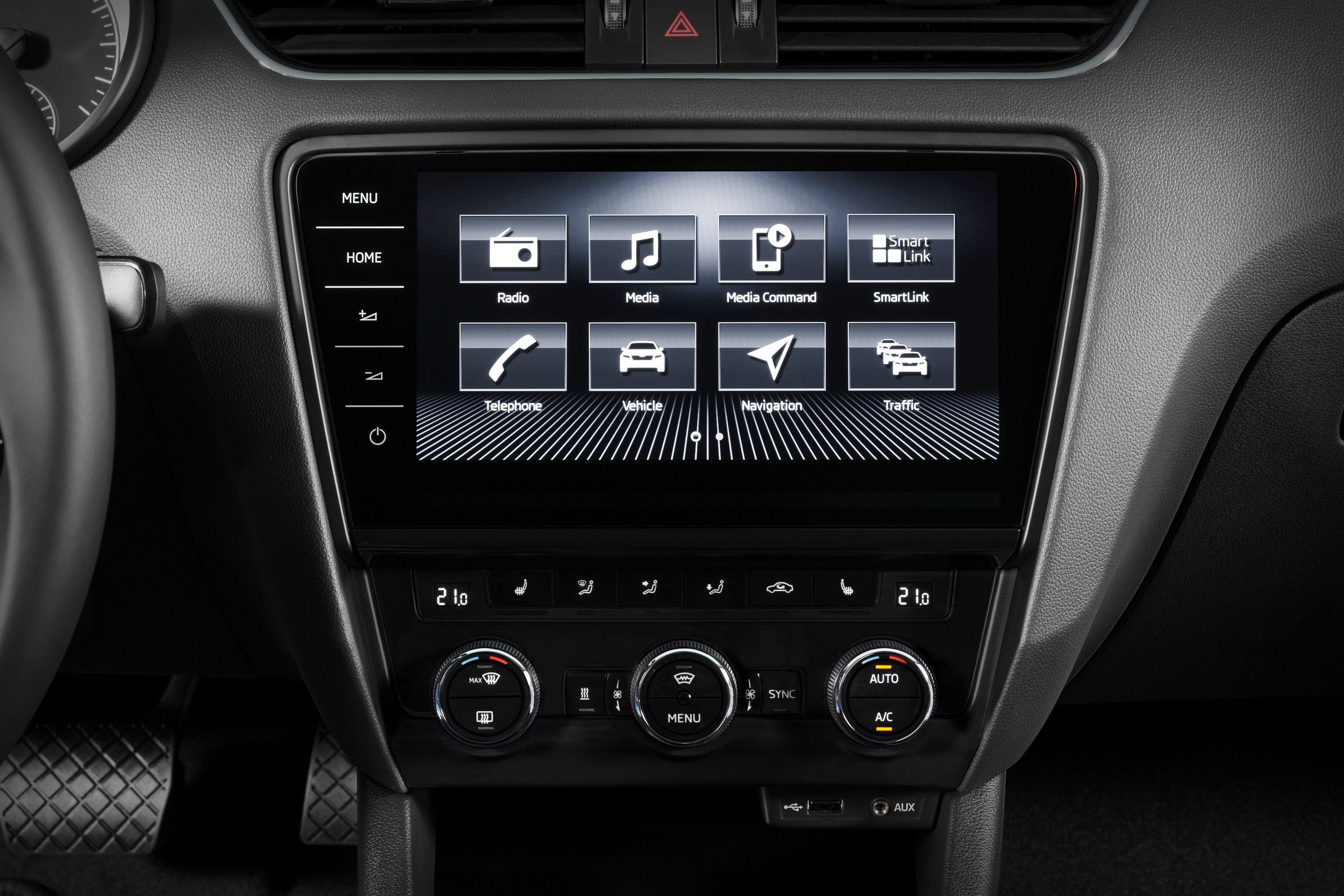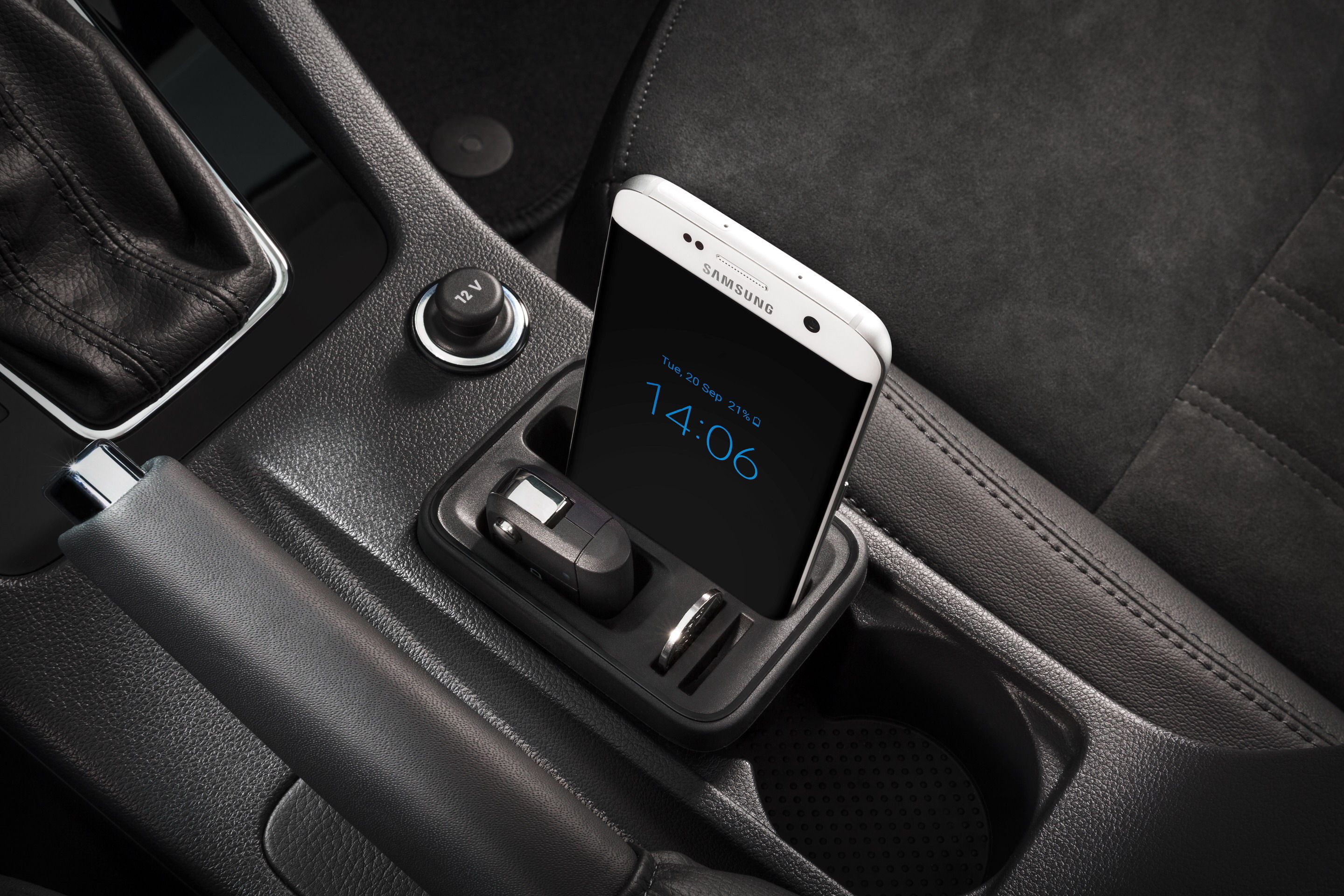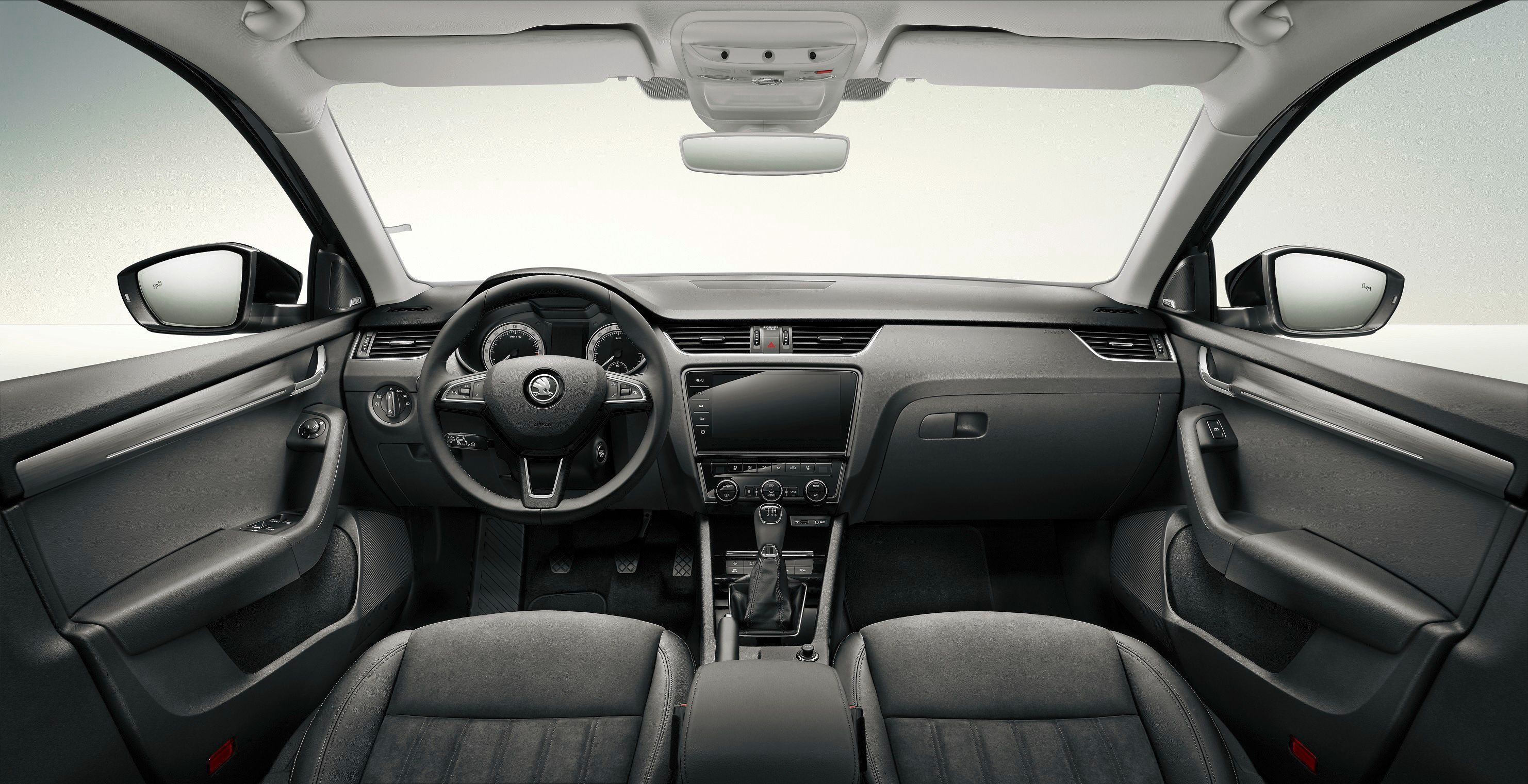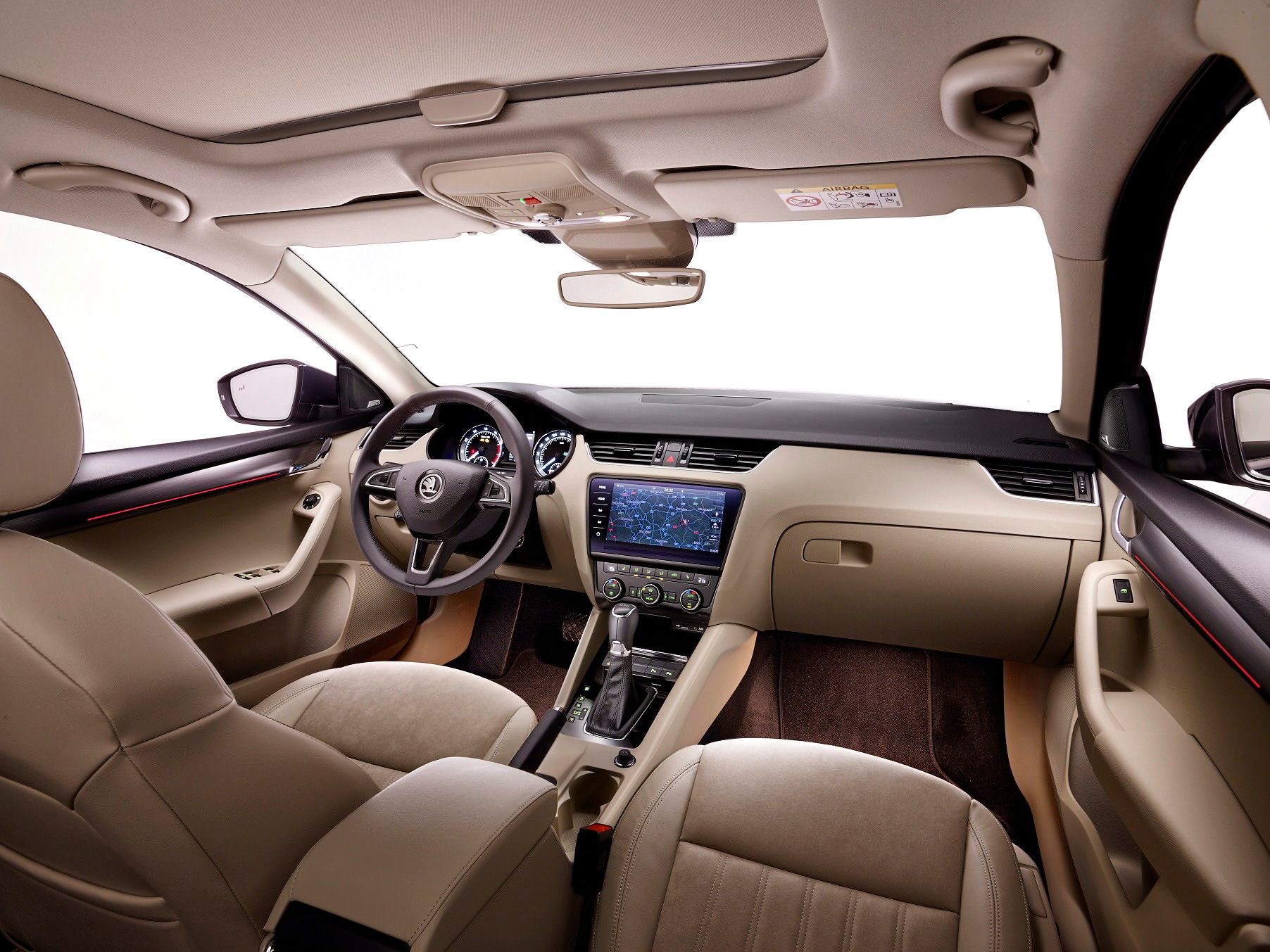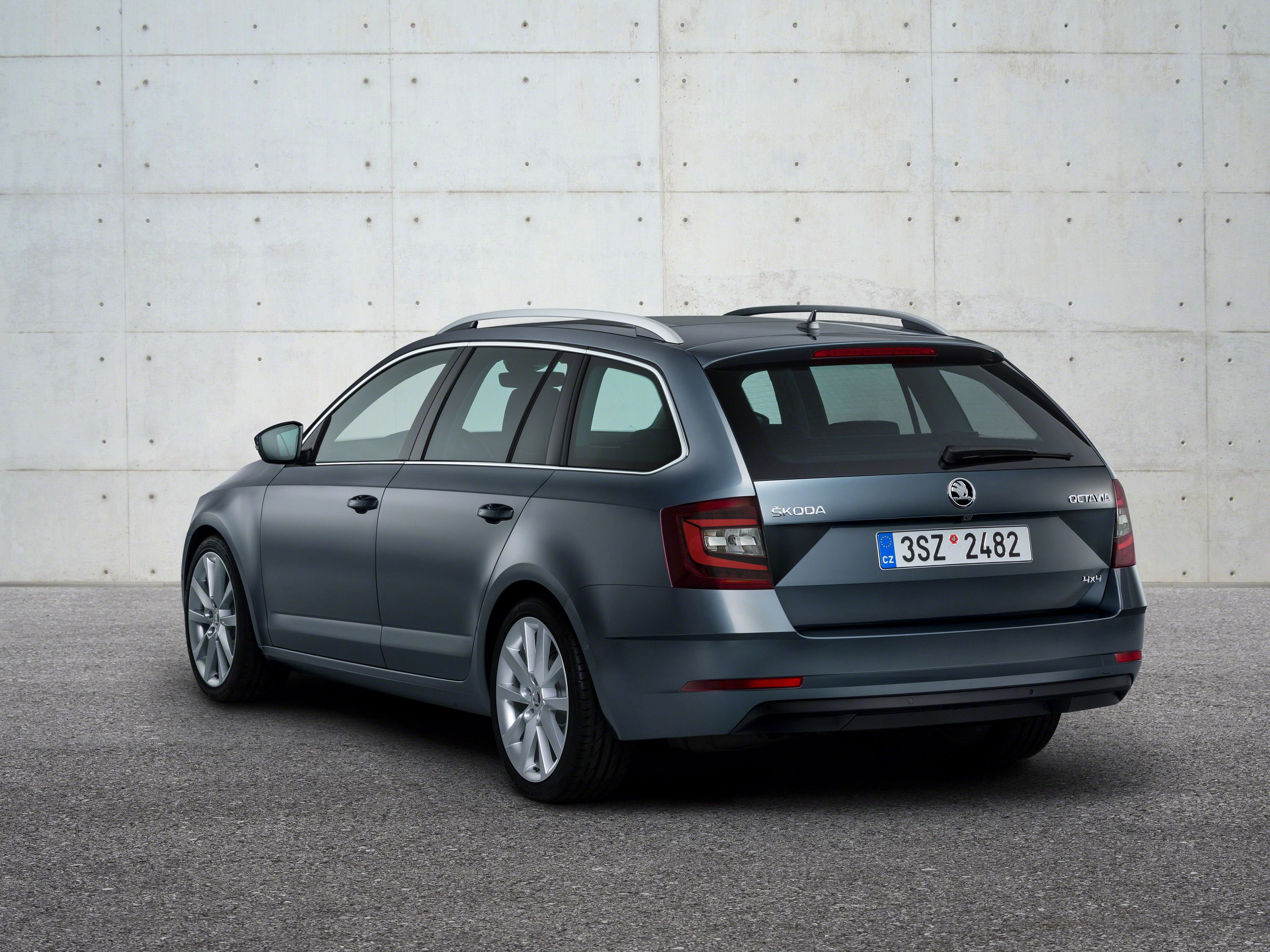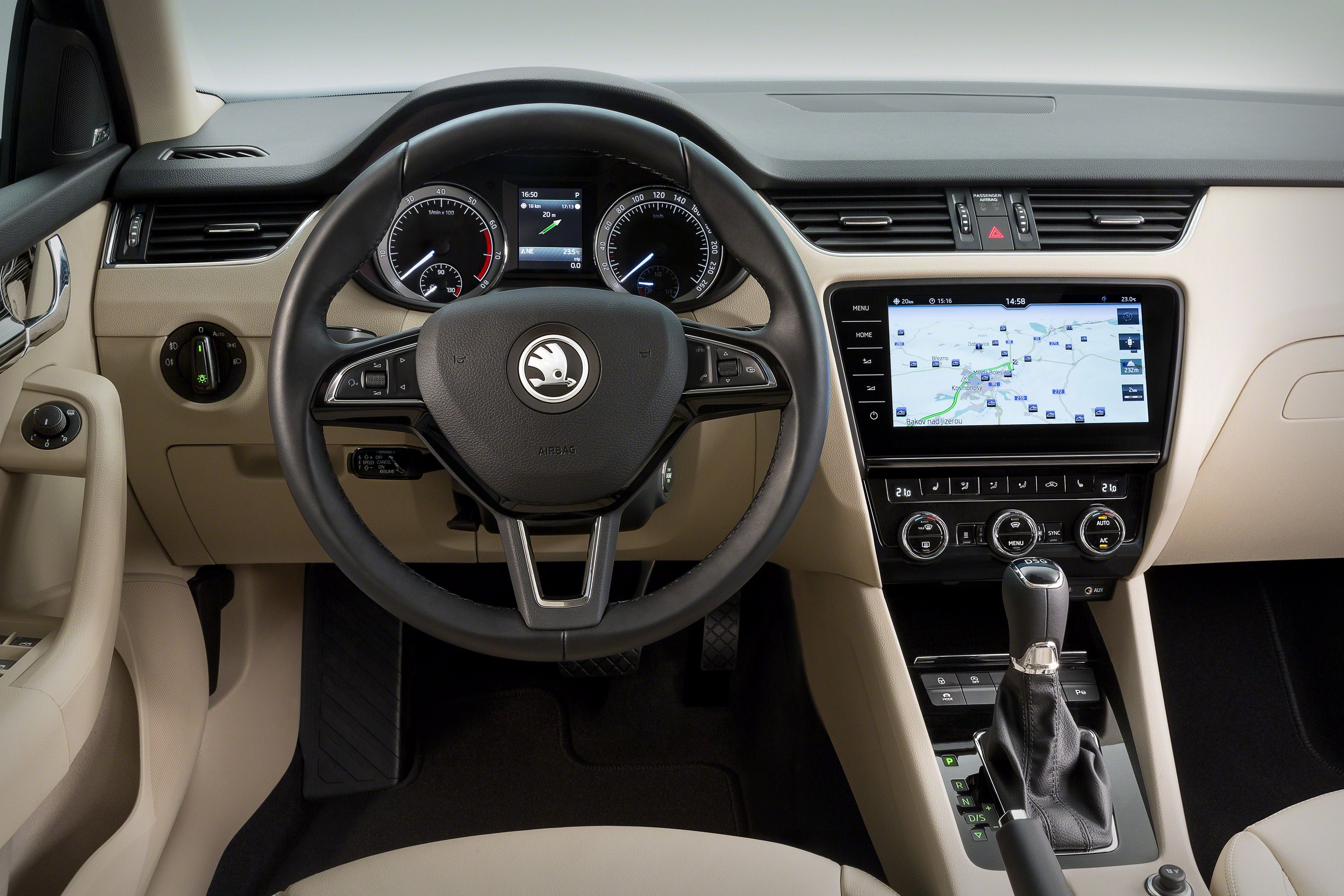Essentially the car that transformed Skoda from a dated company into a modern, competitive carmaker, the Octavia arrived in 1996 and went through two major redesigns since its introduction. The latest occurred in 2012, when the third-generation (or Mk3) model was launched. Also available in notchback (five-door, hatchback-like sedan) and wagon body styles, the restyled Octavia arrived in showrooms with a more modern design, a more upscale cabin, and a revised engine lineup. The new model was met with great enthusiasm, which helped the Octavia remain one of the brand's most popular vehicles. Both the sedan and wagon received their mid-cycle facelifts in 2016.
Unlike other compacts, especially the Volkswagen Golf it is based on, the Octavia received quite a comprehensive update. Skoda introduced a newly designed front fascia and a more aerodynamic design. While the interior remained unchanged styling-wise, the car did receive a host of new gadgets, as well as new and improved safety features. The drivetrain department also gained its fair share of updates, but we will talk about them in the review below.
“The Skoda Octavia has always been in a class of its own in the compact segment,” said Skoda CEO Bernhard Maier. “As the ’heart of the brand’, the Octavia has decisively shaped Skoda's outstanding development from the very start, and has made the company what it is today: an internationally successful automotive manufacturer with a presence in more than 100 markets worldwide. With the now extensively revised Skoda Octavia, we are keen to continue this development sustainably.”
Look for the revised model to hit European streets in the first quarter of 2017.
Continue reading to learn more about the Skoda Octavia.
2017 Skoda Octavia
- Make: Array
- Model: 2017 Skoda Octavia
- [do not use] Vehicle Model: Array
Exterior
Facelifts rarely bring more than just a few nips and tucks, but the Octavia seems to be an exception to this rule. Skoda made a few major revisions to its best-selling model, especially in the front. The first new details that catch the eye is the split design of the headlamps. Instead of the one-piece unit of the outgoing model, the Octavia now sports two separate light clusters on each side of the grille. The main square lights are set toward the sides, while two narrower lights flank the grille, making contact with the chrome frame. The inner headlamps are also taller shaped like the grille, giving the car a wider and unique look. Full-LED technology is standard.
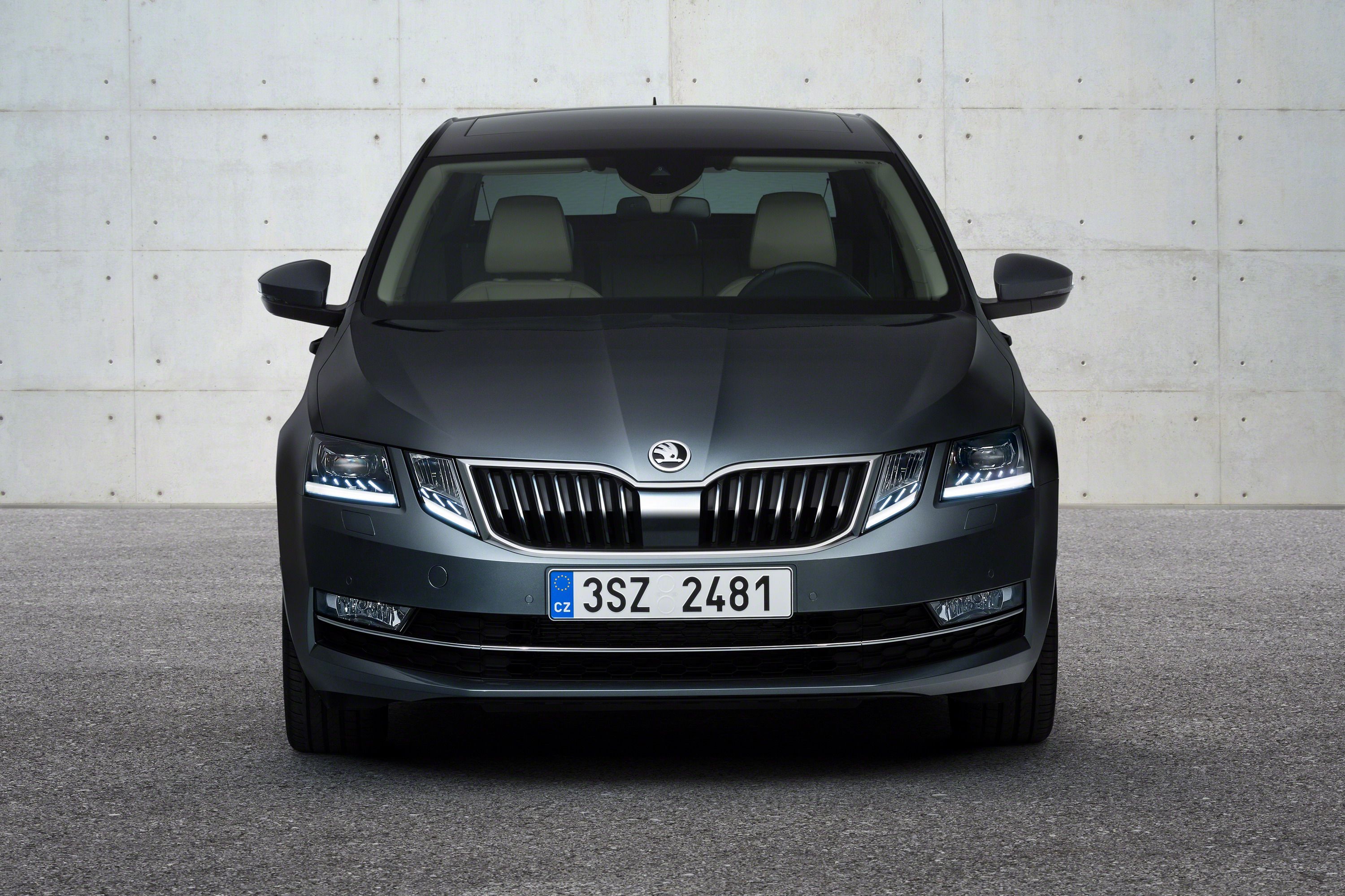
|
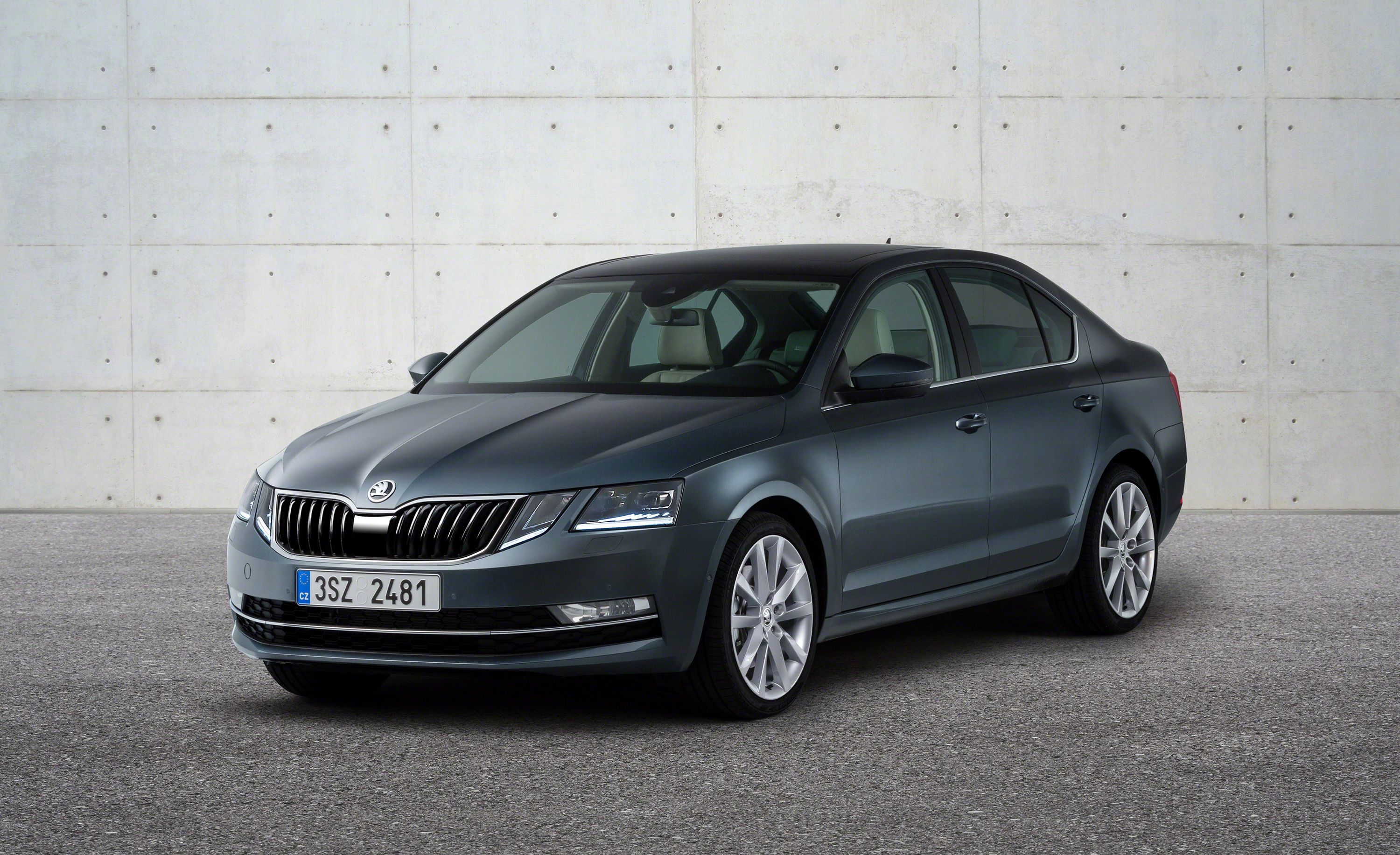
|
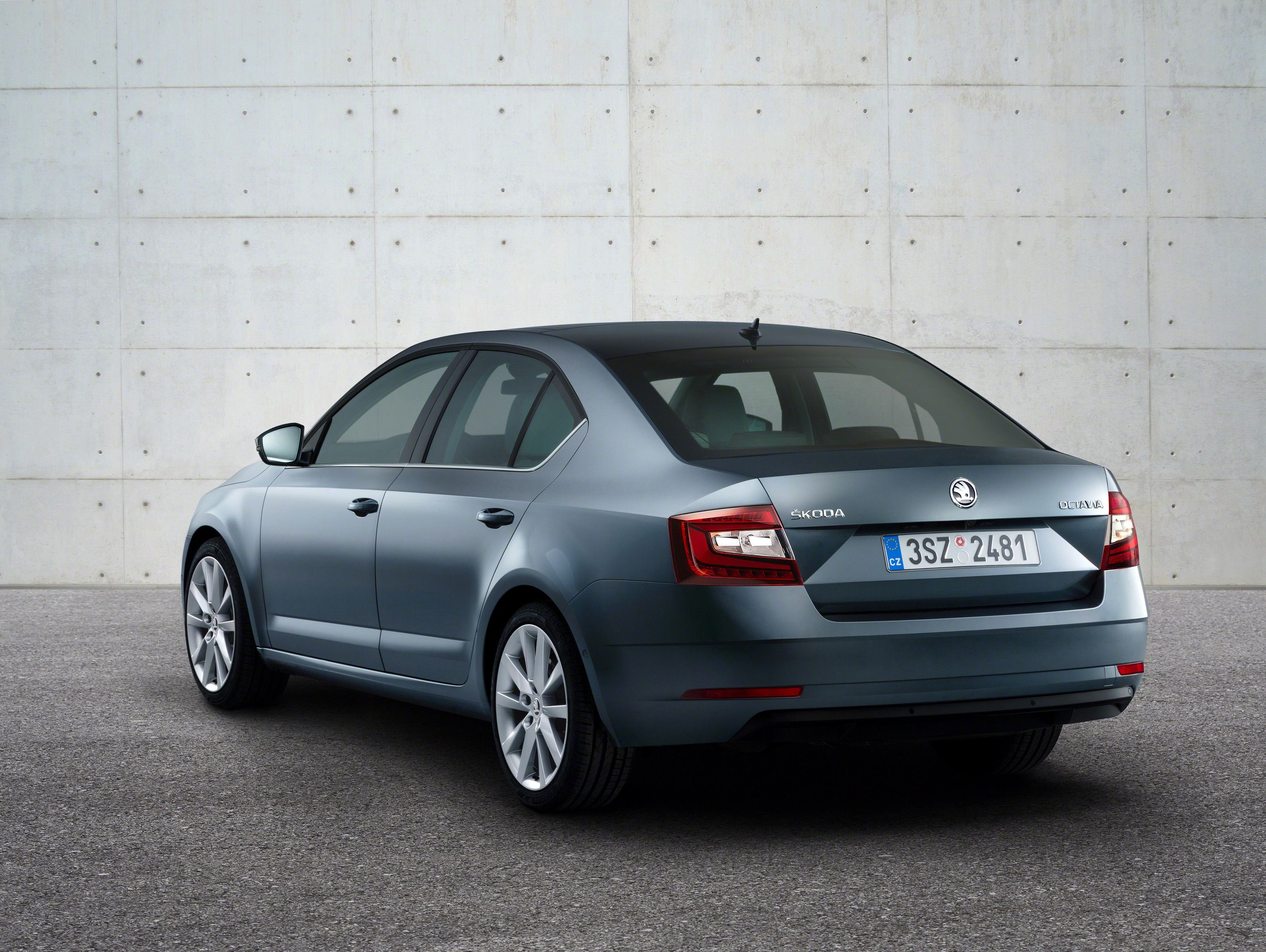
|
The grille has also been redesigned. Although it retains the shape that Skoda introduced in 2012, which received some heat for looking too similar to Kia's "tiger nose" grille design, a thick chrome center piece now splits the thin vertical slats in two. Paired with the revised bumper that is now split in two horizontally by a chrome strip, this new element gives the car a sportier stance. Skoda also refined the engine hood design, now featuring sharper creases, especially toward the fenders.
Comparison: News Octavia vs Old Octavia

|
The side panels carried over unchanged, while the rear section received significantly less modifications. The only noticeable changes here are the revised taillight clusters with LEDs and a mildly reshaped bumper. The facelifted Octavia is rounded off by new light alloy wheels designs with sizes ranging from 16 to 18 inches.
Interior
The cabin carries over unchanged as far as styling goes, but there are a few new gadgets to talk about. Arguably the most important feature is the new infotainment system. All three systems -- Bolero, Amundsen and Columbus -- now have capacitive displays that respond to light touch, while the range-topping Columbus comes with a full 9.2-inch screen. The latter system also includes a WLAN hotspot and, optionally, a SIM card module that enables LTE speed for a fast Internet connection.
There's also a new Skoda Connect feature, which is divided into Infotainment Online and CareConnect. CareConnect is now available on all equipment variants of the Octavia. There's also a new feature called trailer assistant. When the vehicle is being used to tow, the assistant takes over the steering when the vehicle is slowly reversing.
Both the sedan and wagon can be ordered with a heated steering wheel, a customizable key that allows drivers to save their own vehicle settings, and bottle holders with openers. The wagon version also features a removable torch in the trunk and an optional electric tailgate.
Speaking of the trunk, luggage room remained unchanged, but that's not going to be an issue as the Octavia is quite spacious. The sedan boasts 590 liters (20.8 cubic feet) of luggage room, while the wagon comes with 610 liters (21.5 cubic feet). When the rear seats are folded, trunk capacity increases to 1580 and 1740 liters (55.8 and 61.4 cubic feet), respectively.
Drivetrain
The revised Octavia gets four engines at launch, starting with the brand-new, 1.0-liter gasoline unit rated at 115 PS (113 horsepower). Next up is the 1.4-liter four-cylinder rated at 150 PS (148 horses), also working on gasoline, while the diesel lineup includes a 1.6-liter with 115 PS and a 2.0-liter good for 150 PS. The six-speed manual transmission is standard, while options include a six- or seven-speed DSG automatic. The options list also includes Dynamic Chassis Control (DCC), which enables the driver to change the steering and damping settings in the Comfort, Normal and Sport modes.
Safety
This is where Skoda made further improvements. The parking assistant has been optimized, while the Front Assist now has predictive pedestrian protection. Also, rear radar, Blind Spot Detection, and Rear Traffic Alert ensure safe lane changes and also help while reversing out of a parking space. The rear-view camera displays the car’s immediate surroundings via the on-board monitor. Other than that, everything else remains unchanged.
Prices
Skoda has yet announce pricing for the facelifted model, but the figures shouldn't change much compared to the outgoing model. Expect the sedan to start from around £17,000 (about $21,190 as of November 2016) and the wagon to retail from around £18,000 (about $22,430). Both models will go on sale by the end of 2016, while deliveries will begin in early 2017.
Competition
Volkswagen Jetta
Built on the same underpinnings, the Jetta is a much older nameplate than the Octavia and until recently it has been considered a slightly more upscale proposition. Thats no longer the case, but the Jetta is still popular choice in this segment. Introduced in 2010, the sixth-gen Jetta is two years older than the Octavia and thus lacks some of the technology you can now get in the Czech-made car. A recent facelift made the exterior a bit more appealing, but I'd still pick the Octavia based on looks alone. Under the hood, the Jetta comes with a wide range of drivetrains that includes up to 10 variations if we include all global markets. Displacement ranges between 1.2 and 2.0 liters and both gasoline and diesel options are offered. In the U.K., Volkswagen offers a 1.4-liter petrol with either 125 or 150 PS (123 or 148 horsepower), as well as a 1.4-liter diesel with 150 PS. Although some output figures differ, these engines are shared with the Octavia. Pricing for the Jetta starts from £19,155 (around $21,274), which makes the German sedan about 10-percent more expensive than the Octavia. Unlike the Skoda, the Jetta is available in the U.S.
Read more about the Volkswagen Jetta here.
Toyota Corolla
Not only the best-selling car in this segment, the Corolla is also the best-selling car in the world. Its popularity goes way back and has to do with the affordable sticker and its famous reliability, among other attributes. Launched in 2013, the current Corolla is also quite the looker styling wise and has a more upmarket interior. The Japanese sedan is comparable to the Octavia in terms of equipment, but the facelift puts the Skoda in front, although not by much. Much like its competitors, the Corolla comes with four-cylinder engines only. The lineup includes 1.3-, 1.6-, 1.8-, and 2.0-liter gasoline engines and a 1.4-liter diesel. However, not all powerplants are available globally, with some not being offered in certain markets. In the U.S., for instance, Toyota has two 1.8-liter gasoline units on offer. There's a dual VVT-i engine with 132 horsepower and a Valvematic model with 140 horses. The transmission lineup includes a manual, an automatic, and a CTV. Pricing for the Corolla starts from around €21,000 (about £18,715 or $23,320), which makes it a bit more expensive than the Octavia, but not as pricey as the Jetta.
Find out more about the Toyota Corolla here.
Conclusion
The Skoda Octavia has gotten better and better with each generation, and the current model is arguably the best this nameplate had to offer until now. With the new technology, safety features, and the sporty front end, the Octavia has taken yet another step forward and it seems it will continue to be the company's best selling model and one of the most popular offerings in this niche. It might not be as good as the Golf it is based on, but it's a solid all-rounder and an excellent alternative to the more expensive Volkswagen Jetta and Toyota Corolla.


